Douglas Lam, Yuen Lam (林源), was born in 1947 in Shekki, the main town of Zhongshan County. His parents were from Antang, a single lineage village in Dachong District, but they moved to Shekki in the early 1940s. Many male members of the Lam family had gone overseas, including his grandfather who went to Vancouver, Canada, to work at a sawmill in 1914. Using money remitted by his grandfather from Canada, Douglas’s family bought some land and built a new two storey house back in Antang, which was the biggest in the neighbourhood. Douglas’ grandfather had seven children. Douglas’s father Lam Yin (林然), the eldest son, was born before 1920. Douglas also has an uncle who went to Sydney in the 1950s and an aunt and uncle who went to Havana, Cuba, in the post-war years.
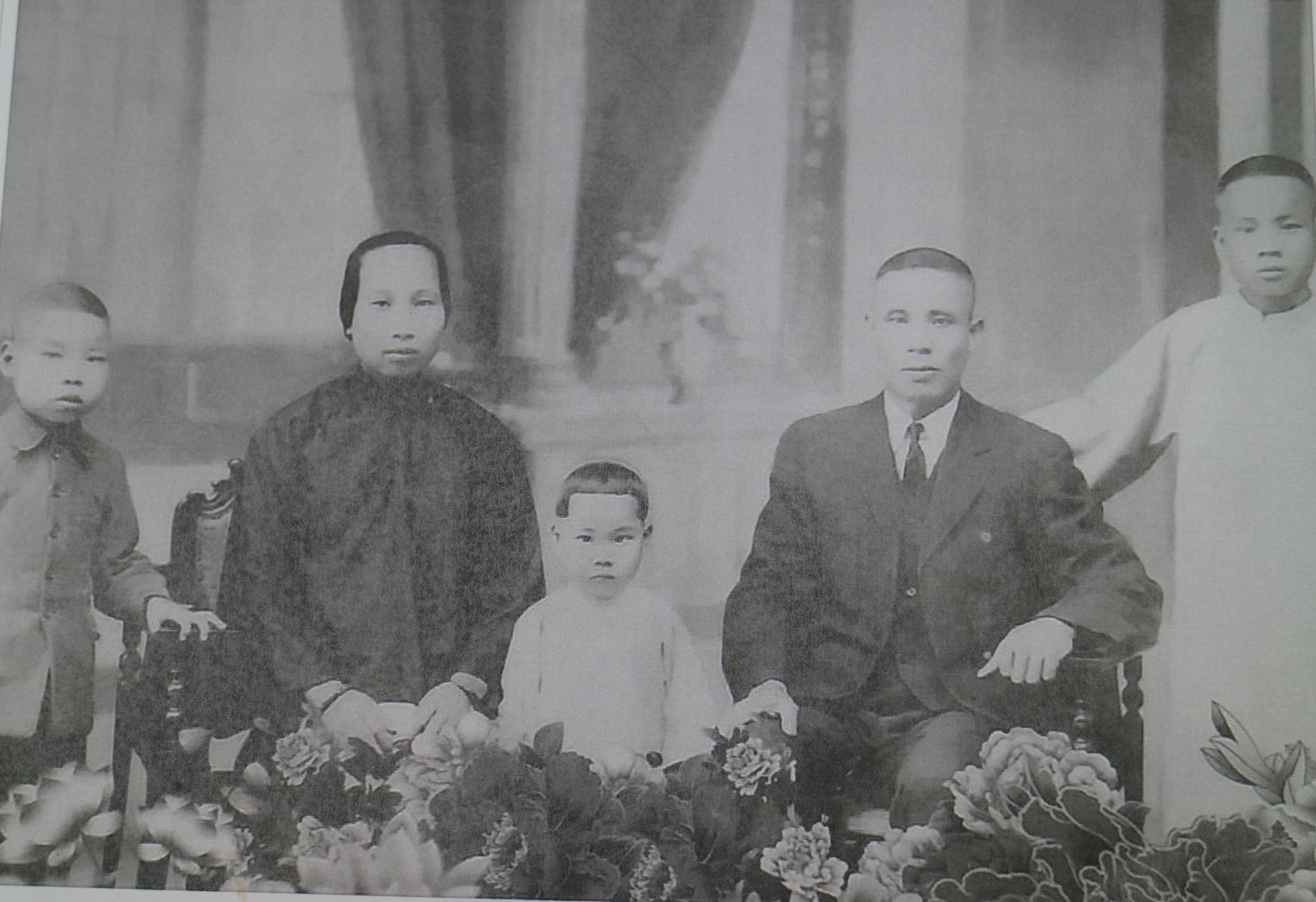
Douglas Lam's grandparents and three of their seven children (Douglas' father is in the far right)
According to Douglas, the villagers of Antang disdained Douglas’s mother at first because she and Douglas’ father were not married in traditional Chinese wedding rituals. It was not until after the birth of Douglas that the couple was warmly accepted and invited to come back to Antang by Douglas’s grandmother. This was shortly after the founding of the People’s Republic in 1949. Due to their family background, which was classified as that of land-owner, the Lam family suffered severe hardship and persecution during the Land Reform period in China in the early 1950s. Douglas’s father was shot and died when Douglas was only three years old; his grandmother faced public humiliation and was forced to live in a pig sty, and Douglas was not permitted to go to school during most of his childhood in the village. Douglas, his grandmother and aunt (his father’s youngest sister) fled to Hong Kong in 1956, but Douglas’s mother remained in the village.
Douglas’s uncle in Sydney, who had become an Australian citizen, applied for him to come to Australia to study in 1961. Douglas arrived by boat and enrolled in a public school in Mosman, Sydney, to study Year 6. At that time he was 14 years old, but his family under-stated his age so that he did not have to go to high school right away. He did not know any English before coming to Australia and he struggled at school in the beginning as he did not understand the language. It was “very difficult. I was given Treasure Island to read. I'm, like, bloody hell, every second word's a new word. How am I going to make sense of it?” He was called names at school but some of the kids were very protective of him. “They take me to Luna Park, birthday parties, you know”.
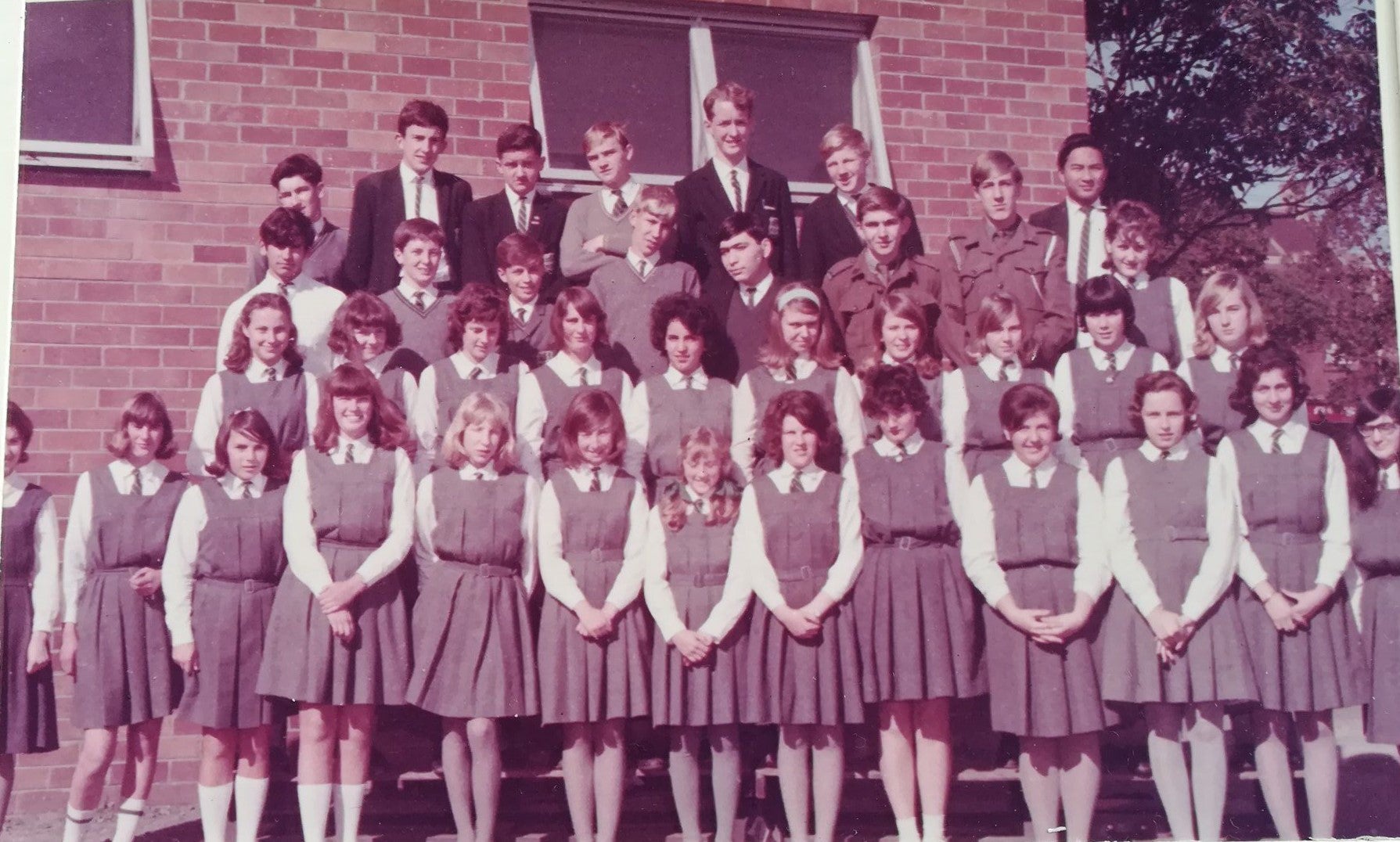
Douglas Lam and his schoolmates from Mosman High School (1965)
Gradually he learnt English and went into high school in Mosman, where he was the only Chinese pupil. He mixed very well with his Australian schoolmates and enjoyed watching movies with them in Cremorne. Apart from working on his studies, every day Douglas helped out in the fruit store where his uncle worked in Mosman. He lived with his uncle above the shop. He also washed dishes at a Chinese restaurant close by on weekends or whenever he was requested. He acquired his Australian citizenship in 1972.
In Australia, Douglas maintained contact with his family members who were scattered in different countries in the world by means of letters. However, he was homesick. “Look, the homesickness never left me, not until I made my first trip back home in 1973 it left me. I had butterflies in - oh I was so excited, so anticipating my first trip. My first flight. I was so excited.”
Douglas returned to Hong Kong the first time in January 1973. He made his first trip to China after New Year that year. After his 26th birthday, he flew from Hong Kong to Vancouver to take his grandfather, who was already in an advanced stage of dementia, back to Hong Kong so that the family could take care of him. Douglas accompanied his grandfather to Zhanjiang (湛江) of Guangdong Province to stay with the family of his grandfather’s youngest son for a few months. Not long after that his grandfather returned to Hong Kong, and died there when he was in his 90s.
Douglas got married in 1978. His wife was from Hong Kong and Douglas applied for her to come to Australia with him. In 1983, Douglas travelled to China again with his young family. Now in his 70s, Douglas is working as a bus driver in Sydney. He lives in Artarmon, on Sydney’s North Shore, and enjoys going to Zhongshan about once a year.
Ancestral house in Antang
Douglas still has an ancestral house in Antang, built in the early 20th century with money sent back to Zhongshan by his grandfather. The house is typical of those found in Southern China, having a very narrow frontage. It was built with the finest construction materials. There is a small house next to it which was the original family home - Douglas’ grandfather built a bigger one next door for his expanding family. Douglas’ mother lived in the house until she passed away in 2006 when she was in her 90s. Douglas’ mother lived frugally for her whole life and refused to have town water installed in the house.
The house is now under Douglas’s name – “my mother made sure of it”. It had been occupied by Douglas’s distant relatives. “It’s better to have the house occupied than having it rot in decay”, Douglas said. Since they have now bought their own home in a high rise apartment block, the house is vacant. However, the occupants, who work as cooked food hawkers, still use the small front yard of the house as a storage area and for food preparation. Douglas hopes to do major remedial work or re-build the house if he can raise enough money.
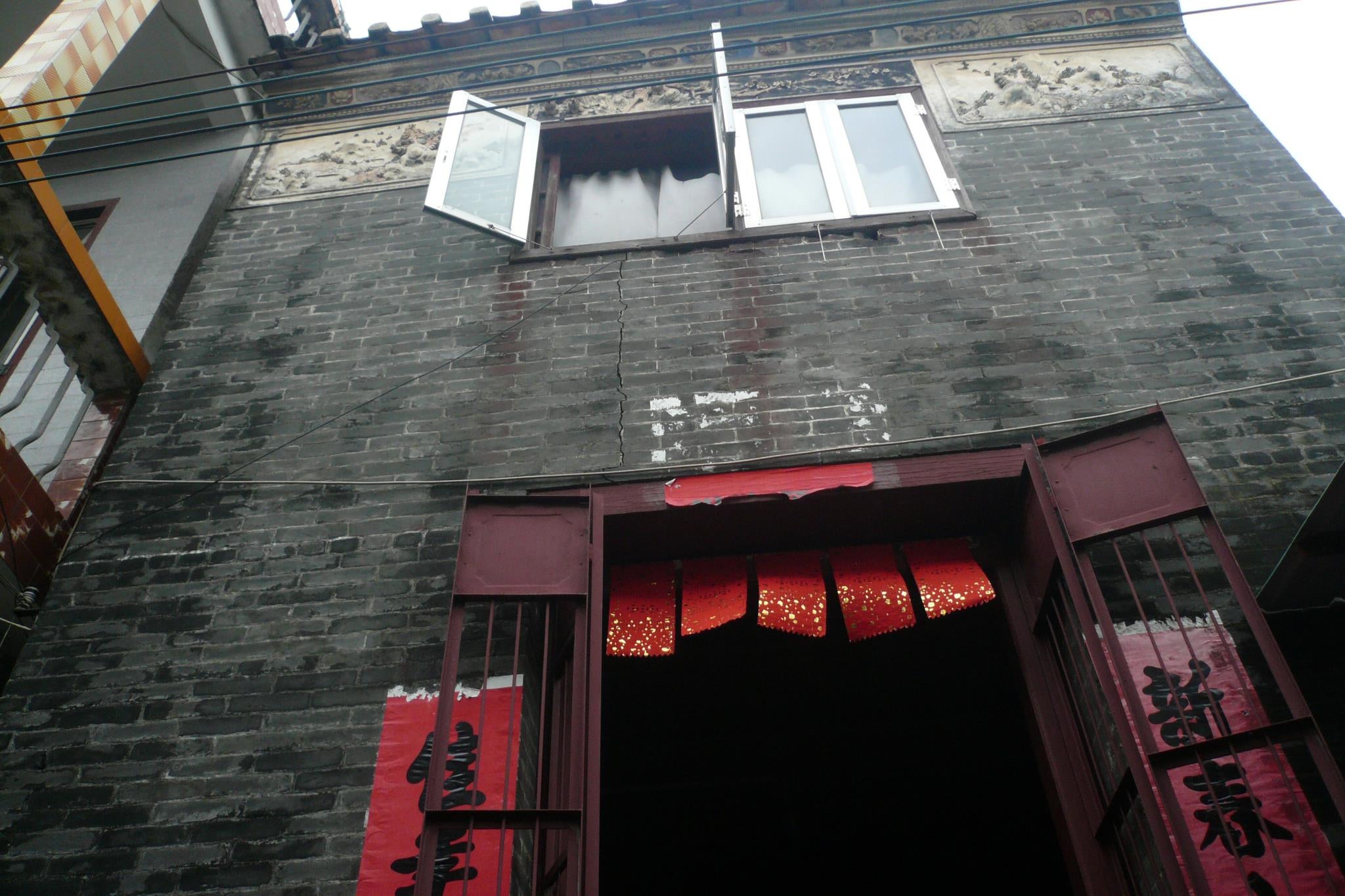
Douglas Lam's ancestral home in Antang village (2010)
Return Journey
Douglas made his first trip back to Zhongshan in 1973. He first took a Japan Airlines flight to Hong Kong via Manila. After visiting his grandmother and aunt in Hong Kong, he was accompanied back to Zhongshan by his aunt. They took the train to Guangzhou and then a boat to Shekki of Zhongshan (a flat-bottomed barge towed by a tug). Realising the shortage of daily goods in China during that time, Douglas took advantage of the privilege granted to returning overseas Chinese and brought everything he was entitled to take in for his relatives, such as a radio, food, clothing, a bicycle, a sewing machine, etc without incurring taxes or levies.
Douglas’ cousin (his mother’s nephew) greeted him at the pier and a fleet of bicycle couriers carried his baggage to the village to meet his mother. Douglas said, “That was a very proud day for my mother, because she suffered so much, you know. And her son was coming home somebody”. He visited an uncle to give him the Phoenix bicycle. “The bicycle was like a family station sedan. The whole family travel on the bike. So he gets the top prize, the bicycle. My mother's nephew gets the sewing machine.”
Douglas returned to Sydney in late 1975, after a sojourn of close to three years in Hong Kong. He visited China again in late 1977 and married his wife in Hong Kong during this trip. The newly married couple returned to Sydney in early 1978. Then in 1983, he travelled to China again with his wife and two young daughters. He also took his younger daughter to his home village and travelled to other places in China such as Shanghai and Nanjing in 2010 shortly after she graduated from the University of Sydney.
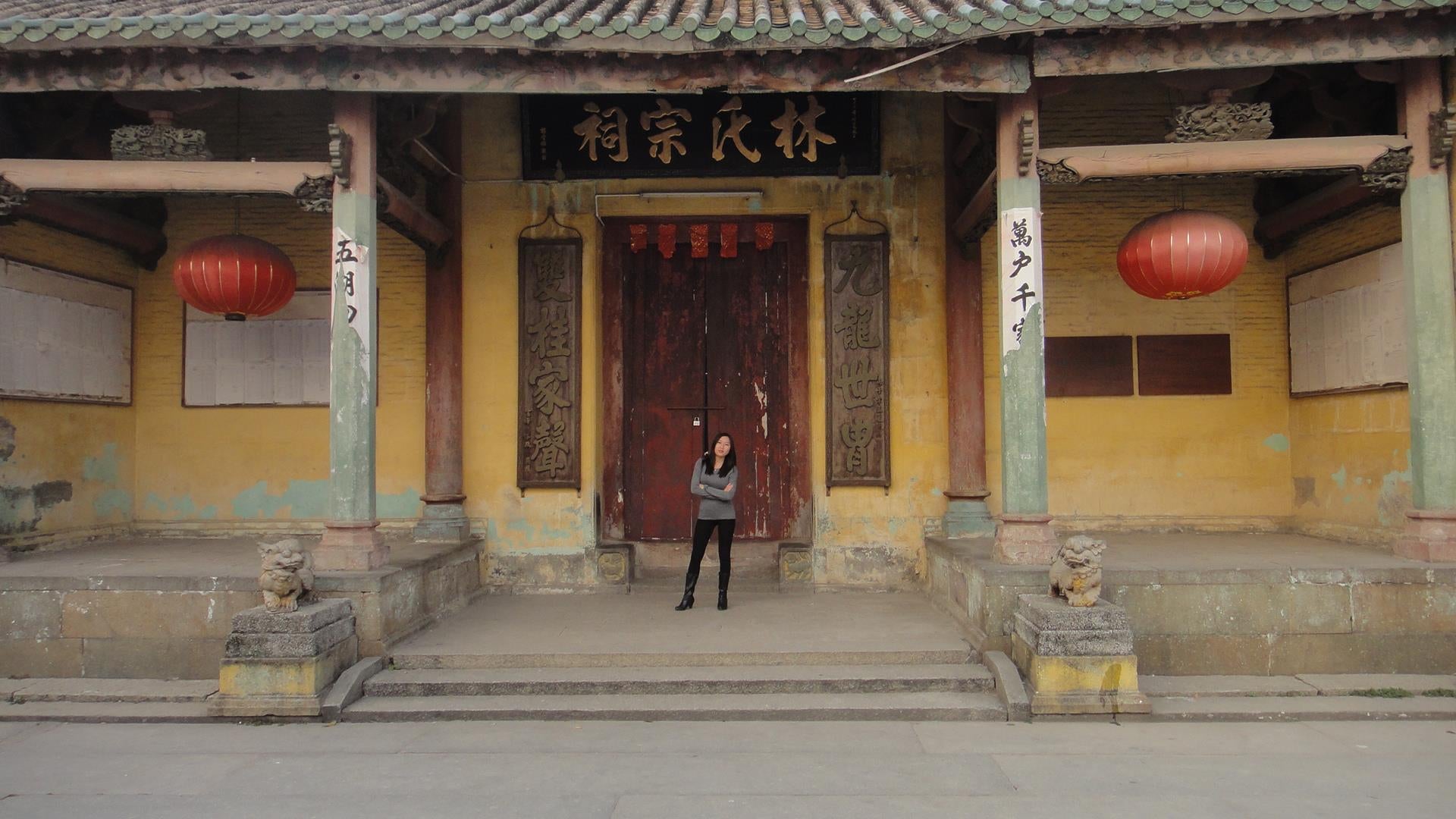
Douglas Lam and his daughter travelled to Antang village in 2010
Helping Zhongshan folk find their roots
In recent years, Douglas has developed an interest in genealogy research, and has helped several families of Chinese descent find their ancestral villages and family linkages in Zhongshan. In 2015, he acted as a guide and translator to help Glenn and Phillip Mar and their uncle Jimmy to find their ancestral home and their ancestors’ grave in Shachong village. Glenn and Phillip are descendants of the Mar family whose grandfather worked in Wing Sang & Co., the famous wholesale banana agent in Sydney.
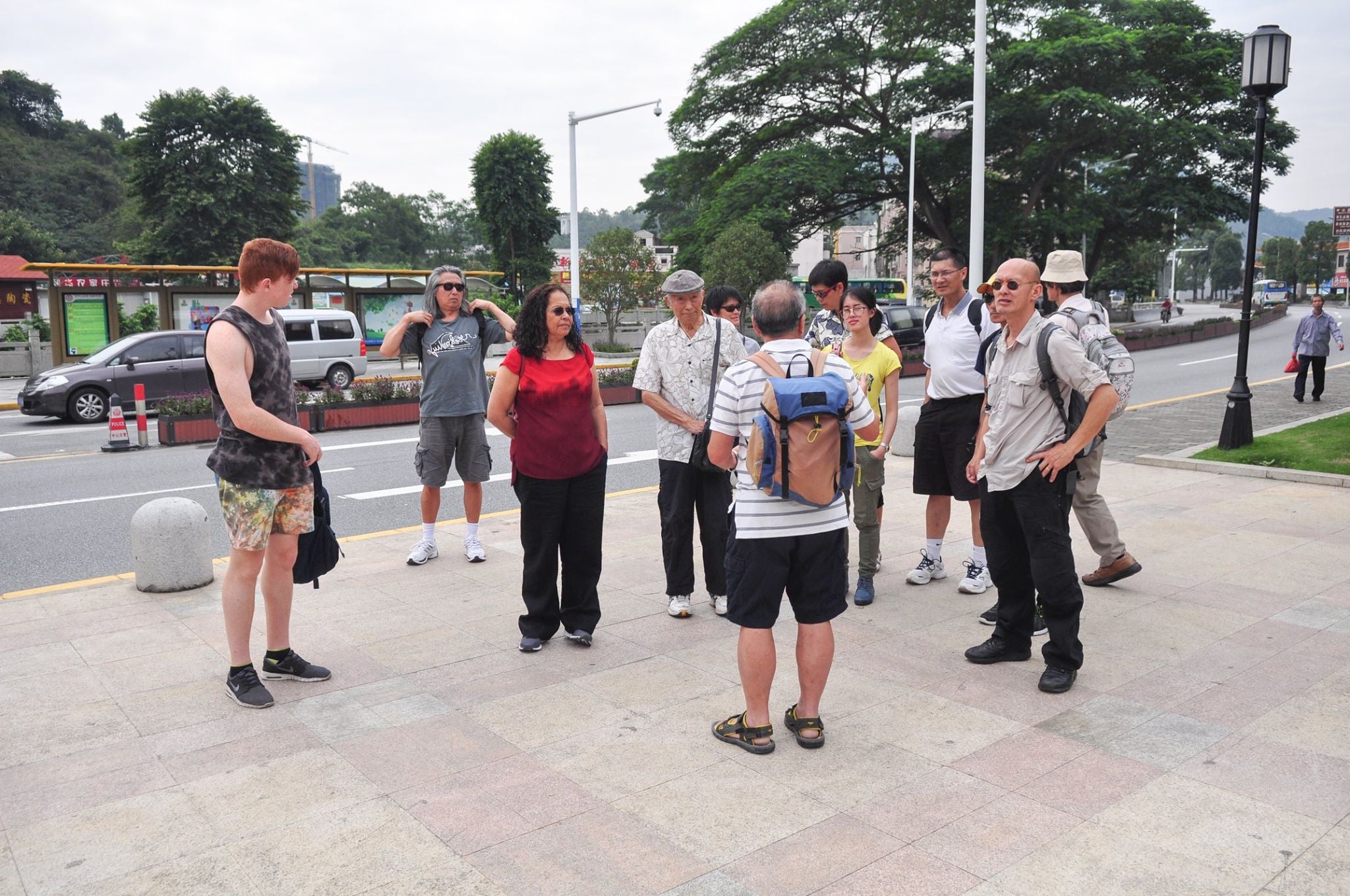
Douglas Lam acted as a guide for the ancestral village search for the Mar family from Sydney in 2015
In 2017, Douglas assisted a small group of people from Australia and New Zealand to find their grandfather’s village in Shengshi. The initial work of researching the genealogy was begun five years earlier when Douglas replied to a request for help online. Since then, he kept in touch with the Australian family, and a local villager, slowly paving the way for their visit in 2017.
From time to time, he receives referrals from friends to help people from America and Australia to trace their Chinese ancestry, to find their family roots and genealogy books in Zhongshan. He enthusiastically assists them in the search, using his language skills and local networks. He has been overwhelmed by the generous welcome and hospitality of local villagers during his every visit. Douglas loves his home village and has donated some money for the renovation of the Lam ancestral hall in Antang.
